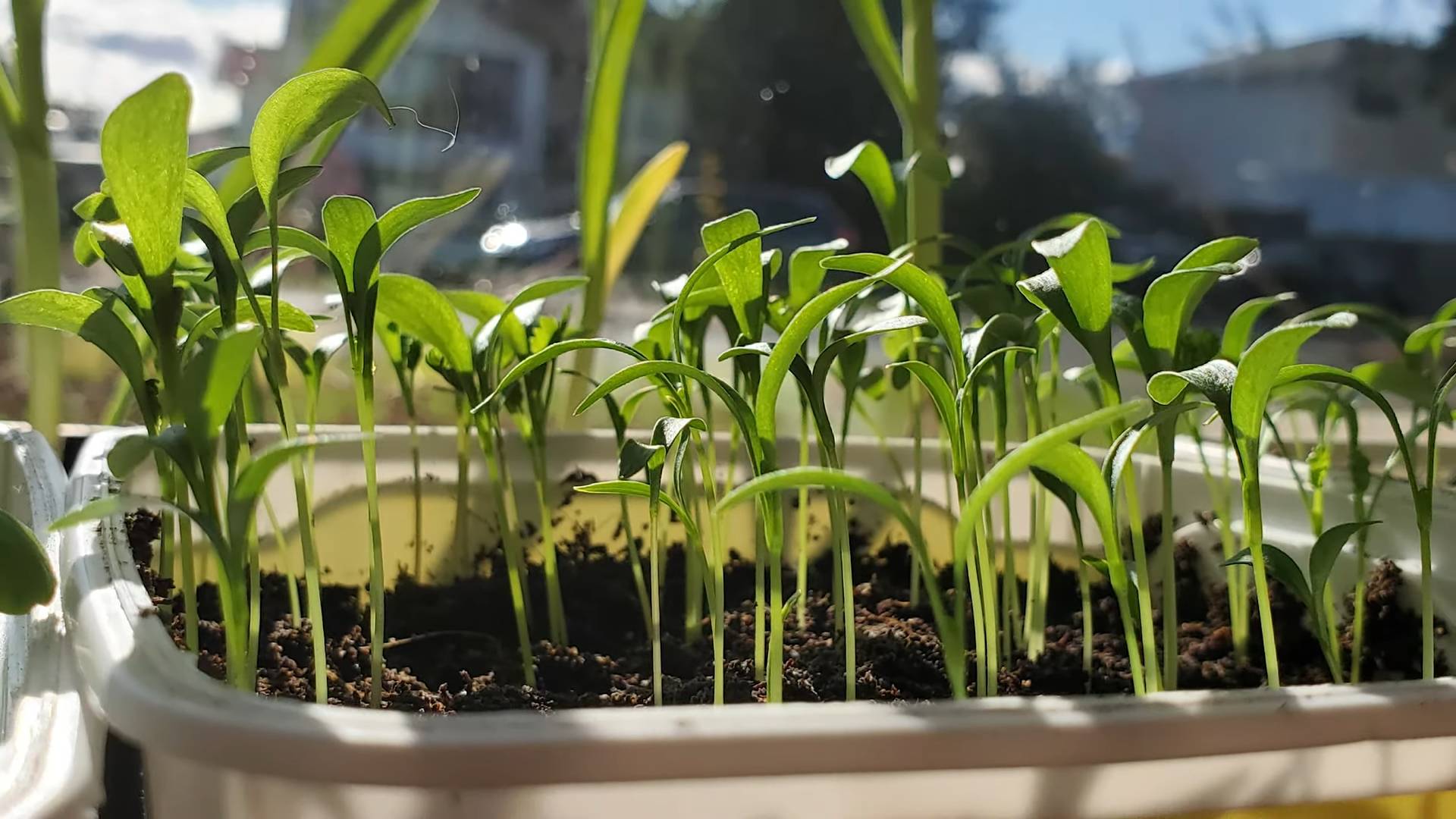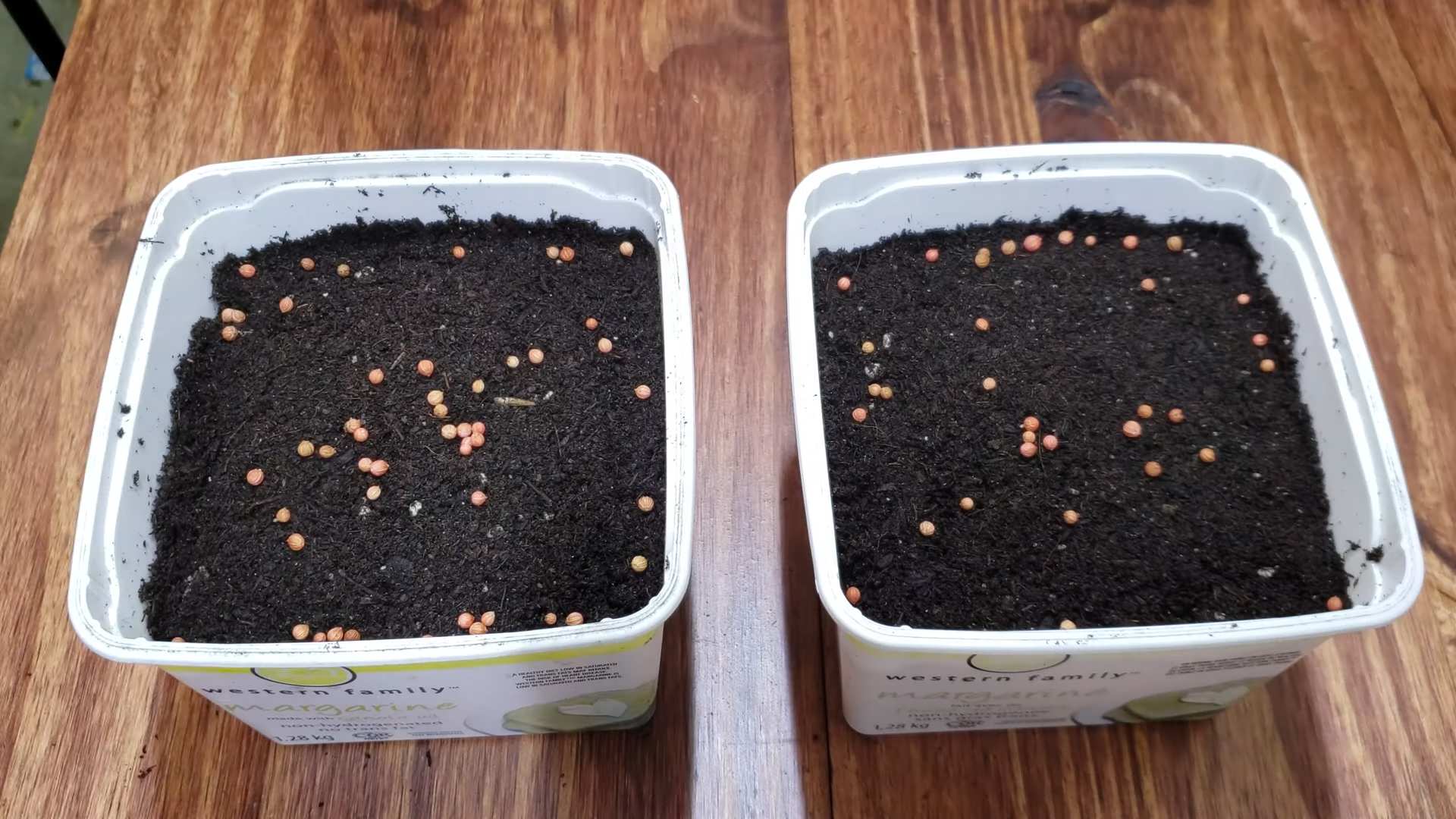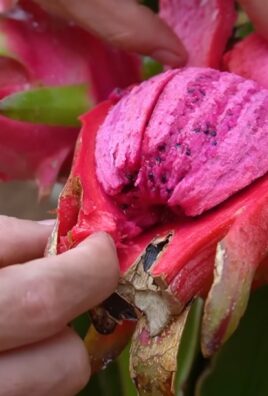Growing Cilantro Indoors can feel like a culinary superpower! Imagine having fresh, vibrant cilantro at your fingertips, ready to elevate your tacos, salads, and salsas, no matter the season. Forget those sad, wilted bunches from the grocery store – with a little know-how, you can cultivate your own thriving cilantro patch right on your windowsill.
Cilantro, also known as coriander (for its seeds), has a rich history, dating back thousands of years. Evidence suggests it was used in ancient Egypt and even found in the tomb of Tutankhamun! Its distinct flavor has graced cuisines across the globe, from Mexican and Indian to Southeast Asian and Mediterranean. But let’s be honest, getting that perfect cilantro flavor can be tricky, especially when relying on store-bought options that often lack freshness.
That’s where this DIY guide comes in! I’m going to share my favorite tricks and hacks for successfully growing cilantro indoors. We’ll cover everything from choosing the right pot and soil to providing the perfect amount of light and water. This isn’t just about having fresh herbs; it’s about saving money, reducing food waste, and experiencing the joy of nurturing your own little green oasis. So, grab your gardening gloves, and let’s get started on this flavorful adventure!

Growing Cilantro Indoors: A Beginner’s Guide to Fresh Herbs Year-Round
Hey there, fellow herb enthusiasts! Are you tired of buying cilantro at the grocery store only to have it wilt away in your fridge within days? I totally get it! That’s why I decided to take matters into my own hands and start growing my own cilantro indoors. And guess what? It’s way easier than you might think! This guide will walk you through everything you need to know to have a thriving cilantro patch right in your kitchen.
What You’ll Need
Before we dive into the nitty-gritty, let’s gather our supplies. Here’s a checklist of everything you’ll need to successfully grow cilantro indoors:
- Cilantro Seeds: You can find these at most garden centers or online. Make sure you’re getting seeds specifically for cilantro (Coriandrum sativum).
- Potting Mix: Use a well-draining potting mix. Avoid using garden soil, as it can compact and hinder drainage.
- Pots: Choose pots that are at least 6 inches deep and have drainage holes. Cilantro has a taproot, so depth is important. I prefer using terracotta pots, but plastic ones work just fine too.
- Grow Lights (Optional but Recommended): Cilantro needs a lot of light, especially indoors. If you don’t have a sunny windowsill, grow lights are a must.
- Watering Can or Spray Bottle: For gentle watering.
- Small Shovel or Trowel: For planting the seeds.
- Seed Starting Tray (Optional): If you prefer to start your seeds indoors before transplanting.
Choosing the Right Location
Cilantro loves sunlight! Ideally, you want to place your cilantro pots in a spot that receives at least 6 hours of direct sunlight per day. A south-facing windowsill is usually a good bet. If you don’t have enough natural light, don’t worry! That’s where grow lights come in handy. Position your grow lights about 6-12 inches above the plants and keep them on for 14-16 hours a day.
Planting Your Cilantro Seeds
Okay, let’s get our hands dirty! Here’s how to plant your cilantro seeds:
- Prepare Your Pots: Fill your pots with potting mix, leaving about an inch of space at the top. Gently pat down the soil.
- Sow the Seeds: Cilantro seeds have a hard outer shell, so it helps to scarify them slightly to improve germination. You can do this by gently rubbing the seeds between two pieces of sandpaper or by soaking them in water for 24 hours before planting. Sow the seeds about 1/4 to 1/2 inch deep and space them about 1-2 inches apart. I usually plant 3-4 seeds per pot to increase my chances of success.
- Cover the Seeds: Lightly cover the seeds with potting mix.
- Water Gently: Water the soil gently until it’s moist but not soggy. You can use a watering can or a spray bottle.
- Provide Warmth: Cilantro seeds germinate best in warm temperatures (around 65-70°F). You can place your pots on a heat mat or in a warm spot in your house.
Germination and Early Growth
Now comes the waiting game! Cilantro seeds typically germinate in about 7-10 days. Here’s what to do during this crucial period:
- Keep the Soil Moist: Check the soil moisture daily and water as needed to keep it consistently moist. Don’t let the soil dry out completely.
- Provide Light: Once the seedlings emerge, make sure they’re getting plenty of light. If you’re using grow lights, adjust the height as the plants grow.
- Thin the Seedlings (Optional): If you planted multiple seeds per pot and they all germinate, you may need to thin them out to prevent overcrowding. Choose the strongest-looking seedling in each pot and snip off the others at the soil line.
Caring for Your Cilantro Plants
Once your cilantro plants are established, it’s time to focus on providing them with the care they need to thrive.
Watering
Cilantro needs consistent moisture, but it doesn’t like to be waterlogged. Water your plants when the top inch of soil feels dry to the touch. Avoid overwatering, as this can lead to root rot. Make sure your pots have good drainage to prevent water from pooling at the bottom.
Fertilizing
Cilantro is a relatively light feeder, but it will benefit from occasional fertilization. Use a balanced liquid fertilizer diluted to half strength every 2-3 weeks. Avoid over-fertilizing, as this can cause the plants to become leggy and weak.
Pest Control
Fortunately, cilantro is relatively pest-resistant. However, you may occasionally encounter aphids or spider mites. If you notice any pests, you can try spraying your plants with insecticidal soap or neem oil.
Bolting
One of the biggest challenges with growing cilantro is bolting, which is when the plant starts to produce flowers and seeds. Bolting is triggered by hot weather and long days. Once cilantro bolts, the leaves become bitter and less flavorful. Here are some tips to prevent bolting:
- Keep the Plants Cool: Cilantro prefers cooler temperatures (around 60-75°F). If you live in a hot climate, try to keep your plants in a cooler location or provide them with shade during the hottest part of the day.
- Provide Adequate Moisture: Drought stress can also trigger bolting. Make sure your plants are getting enough water.
- Harvest Regularly: Harvesting the leaves regularly can help delay bolting.
- Succession Planting: Plant new seeds every few weeks to ensure a continuous supply of fresh cilantro.
Harvesting Your Cilantro
The best part of growing your own cilantro is, of course, harvesting it! You can start harvesting the leaves when the plants are about 6 inches tall.
- Harvesting Technique: Use scissors or pruning shears to snip off the outer leaves, leaving the inner leaves to continue growing. Avoid cutting off more than one-third of the plant at a time.
- Harvesting Frequency: Harvest your cilantro regularly to encourage new growth and delay bolting.
- Storage: Freshly harvested cilantro is best used immediately. However, you can store it in the refrigerator for a few days. Wrap the cilantro in a damp paper towel and place it in a plastic bag.
Troubleshooting
Even with the best care, you may encounter some problems while growing cilantro indoors. Here are some common issues and how to fix them:
- Yellowing Leaves: This could be a sign of overwatering, underwatering, or nutrient deficiency. Check the soil moisture and adjust your watering accordingly. If the problem persists, try fertilizing your plants.
- Leggy Growth: This is usually caused by insufficient light. Make sure your plants are getting enough sunlight or grow light.
- Slow Growth: This could be due to a variety of factors, including poor soil, insufficient light, or cold temperatures. Make sure your plants are getting the right conditions.
- Bolting: As mentioned earlier, bolting is a common problem with cilantro. Follow the tips above to prevent it.
Extending Your Harvest
Cilantro is an annual herb, which means it completes its life cycle in one year. However, you can extend your harvest by following these tips:
- Succession Planting: Plant new seeds every few weeks to ensure a continuous supply of fresh cilantro.
- Pinch Off Flower Buds: If you see any flower buds forming, pinch them off to delay bolting.
- Harvest Seeds: If your cilantro does bolt, you can harvest the seeds and use them as coriander in your cooking.
Enjoying Your Homegrown Cilantro
Now that you’ve successfully grown your own cilantro indoors, it’s time to enjoy the fruits (or rather, leaves) of your labor! Use your fresh cilantro in all your favorite recipes, from tacos and guacamole to soups and salads. There’s nothing quite like the taste of homegrown herbs!
Growing cilantro indoors is a rewarding experience that allows you to have fresh herbs at your fingertips year-round. With a little bit of care and attention, you can enjoy a thriving cilantro patch right in your kitchen. Happy gardening!

Conclusion
So, there you have it! Growing cilantro indoors is not only achievable, but it’s also a game-changer for anyone who loves fresh herbs at their fingertips. Forget those sad, wilted bunches from the grocery store that seem to expire the moment you get them home. With a little effort and the right conditions, you can have a thriving cilantro patch right in your kitchen, ready to add a burst of flavor to your favorite dishes.
Why is this DIY trick a must-try? Because it empowers you to control the quality and freshness of your cilantro. You’ll know exactly where it came from, how it was grown, and that it’s free from pesticides and other unwanted chemicals. Plus, it’s incredibly satisfying to nurture a plant from seed to harvest. There’s a certain joy in snipping off fresh cilantro leaves that you grew yourself, knowing you’re adding a touch of homegrown goodness to your meals.
But the benefits don’t stop there. Growing cilantro indoors is also a sustainable choice. You’re reducing your reliance on commercially grown herbs, which often travel long distances and contribute to carbon emissions. You’re also minimizing food waste, as you only harvest what you need, when you need it.
Ready to take your indoor cilantro game to the next level? Consider these variations:
* Succession Planting: Plant new seeds every few weeks to ensure a continuous supply of cilantro. This is especially important since cilantro tends to bolt (go to seed) quickly.
* Companion Planting: Grow your cilantro alongside other herbs like parsley or chives, which thrive in similar conditions. This can create a mini herb garden that’s both beautiful and functional.
* Different Varieties: Experiment with different varieties of cilantro, such as ‘Slow Bolt’ or ‘Santo,’ which are known for their resistance to bolting.
* Hydroponics: For a more advanced approach, try growing cilantro hydroponically. This method uses nutrient-rich water instead of soil and can result in faster growth and higher yields.
Ultimately, the best way to discover the joys of growing cilantro indoors is to simply give it a try. Don’t be afraid to experiment, learn from your mistakes, and adapt your approach as needed. Every growing environment is unique, so what works for one person may not work for another. The key is to be patient, observant, and willing to adjust your methods based on your own experiences.
We’re confident that you’ll find growing cilantro indoors to be a rewarding and delicious experience. So, grab some seeds, find a sunny spot, and get ready to enjoy the freshest cilantro you’ve ever tasted.
We’d love to hear about your experiences! Share your tips, tricks, and photos in the comments below. Let’s create a community of indoor cilantro growers and inspire others to embrace the joys of homegrown herbs. What are you waiting for? Start your indoor cilantro garden today!
Frequently Asked Questions (FAQ)
What kind of soil is best for growing cilantro indoors?
Cilantro thrives in well-draining soil that is rich in organic matter. A good potting mix specifically formulated for herbs or vegetables is ideal. You can also create your own mix by combining equal parts of potting soil, compost, and perlite or vermiculite. The compost provides essential nutrients, while the perlite or vermiculite improves drainage and aeration. Avoid using garden soil, as it can be too heavy and may contain pests or diseases.
How much sunlight does indoor cilantro need?
Cilantro needs at least 6-8 hours of sunlight per day to thrive. A south-facing window is usually the best option, as it provides the most direct sunlight. If you don’t have a sunny window, you can supplement with artificial light. A grow light specifically designed for plants is ideal, but a fluorescent or LED light can also work. Position the light a few inches above the plants and keep it on for 12-14 hours per day. Insufficient light can lead to leggy growth and reduced flavor.
How often should I water my indoor cilantro?
Water your cilantro regularly, keeping the soil consistently moist but not waterlogged. Check the soil moisture by sticking your finger about an inch into the soil. If it feels dry, it’s time to water. Water deeply, until water drains out of the bottom of the pot. Avoid overwatering, as this can lead to root rot. Also, be sure to use a pot with drainage holes to prevent water from accumulating at the bottom. During the warmer months, you may need to water more frequently than during the cooler months.
Why is my cilantro bolting (going to seed)?
Bolting is a common problem with cilantro, especially in warm weather. It’s a natural process where the plant starts to produce seeds, which can make the leaves taste bitter. To prevent bolting, keep your cilantro cool and well-watered. Provide shade during the hottest part of the day, and consider using a fan to improve air circulation. You can also pinch off any flower buds as soon as you see them. Choosing a slow-bolt variety of cilantro can also help. If your cilantro does bolt, you can still harvest the seeds, which are known as coriander.
How do I harvest cilantro leaves?
Harvest cilantro leaves as needed, starting when the plants are about 6 inches tall. Use scissors or your fingers to snip off the outer leaves, leaving the inner leaves to continue growing. Avoid harvesting more than one-third of the plant at a time, as this can stress the plant and slow down growth. Regular harvesting can actually encourage the plant to produce more leaves.
Can I grow cilantro from cuttings?
While it’s possible to propagate some herbs from cuttings, cilantro is not typically grown this way. Cilantro is best grown from seed, as cuttings tend to be less successful.
What are some common pests and diseases that affect indoor cilantro?
Indoor cilantro is generally less susceptible to pests and diseases than outdoor cilantro. However, aphids, spider mites, and whiteflies can sometimes be a problem. These pests can be controlled with insecticidal soap or neem oil. Overwatering can lead to fungal diseases like root rot. To prevent these problems, provide good air circulation, avoid overwatering, and inspect your plants regularly for any signs of pests or diseases.
How long does it take for cilantro to grow from seed?
Cilantro typically germinates in 7-10 days. You can speed up germination by soaking the seeds in water overnight before planting. It takes about 45-60 days from planting to harvest.
Can I grow cilantro in a small pot?
Yes, you can grow cilantro in a small pot, but it will need to be repotted as it grows. A pot that is at least 6 inches in diameter is a good starting size. Make sure the pot has drainage holes to prevent waterlogging.
Is it better to grow cilantro indoors or outdoors?
Both indoor and outdoor growing have their advantages. Growing cilantro indoors allows you to control the environment and protect the plants from extreme weather conditions. It also allows you to grow cilantro year-round, regardless of the climate. Growing cilantro outdoors can provide more sunlight and space for the plants to grow, but it also exposes them to pests, diseases, and weather fluctuations. The best option depends on your individual circumstances and preferences.





Leave a Comment